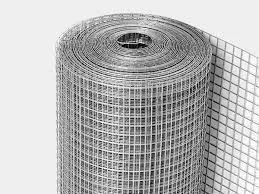marras . 01, 2024 18:30 Back to list
Design and Benefits of Rock Cage Retaining Walls for Landscape Stability and Aesthetics
Rock Cage Retaining Walls A Durable Solution for Soil Erosion
In the realm of civil engineering and landscaping, retaining walls play a pivotal role in managing soil erosion, controlling water runoff, and creating visually appealing landscapes. Among the diverse types of retaining walls, rock cage retaining walls, commonly known as gabion walls, have gained popularity due to their durability, ecological benefits, and aesthetic appeal.
Understanding Rock Cage Retaining Walls
A rock cage retaining wall consists of wire mesh baskets, known as gabions, filled with rocks or other durable materials. These cages are assembled to create a sturdy structure that can withstand various environmental stresses. The flexibility of the design allows for a variety of applications, whether in large-scale infrastructural projects or small residential landscapes.
The construction of rock cage retaining walls is relatively straightforward. First, the site is prepared by excavating soil and leveling the ground. Then, the wire mesh cages are assembled and filled with rocks. The size and type of rocks can vary depending on the specific requirements of the project; larger stones provide greater stability, while smaller stones can fill gaps and enhance the wall's structure. Once the cages are securely stacked, they can be anchored in place with additional materials to ensure longevity.
Advantages of Rock Cage Retaining Walls
rock cage retaining wall

One of the most significant advantages of rock cage retaining walls is their strength and durability. The wire mesh framework provides a robust structure that can resist shifting and settling soil. Additionally, the openness of the rock fill allows for excellent drainage, reducing hydrostatic pressure that can lead to wall failure. This drainage capacity helps prevent water accumulation behind the wall, which is a common issue with traditional solid walls.
Ecologically, gabion walls support natural vegetation growth. The gaps between the rocks can be filled with soil, allowing plants to take root. This feature not only enhances the wall’s appearance but also contributes to erosion control, as plant roots stabilize the soil. Furthermore, rock cage walls integrate well into natural landscapes, often blending seamlessly with the environment.
Another compelling benefit is cost-effectiveness. Compared to poured concrete or block walls, rock cage retaining walls are typically more affordable, both in terms of materials and labor. The natural rocks used for filling can often be sourced locally, reducing transportation costs and environmental impact.
Applications and Considerations
Rock cage retaining walls are versatile and can be used in various applications, including hillside stabilization, road construction, riverbank protection, and decorative landscaping. However, it is essential to consider local regulations and potential environmental impacts before undertaking a construction project.
In conclusion, rock cage retaining walls offer a practical and aesthetically pleasing solution for managing soil erosion and enhancing landscape design. Their durability, ecological benefits, and cost-effectiveness make them an excellent choice for anyone looking to address soil stability and drainage issues. As the importance of sustainable practices continues to grow, gabion walls stand out as a reliable option for both large-scale and small-scale projects.
-
Reliable Nails for Every Construction Project
NewsJun.10,2025
-
Reliable Iron Nails for Every Project
NewsJun.10,2025
-
Razor Wire Solutions for Enhanced Security
NewsJun.10,2025
-
Hydraulic Hose Ferrule Fittings: Key to a Strong Hydraulic System
NewsJun.10,2025
-
Field Fencing: Secure Your Property with the Best Solutions
NewsJun.10,2025
-
Euro Fences: The Ultimate Choice for Security and Style
NewsJun.10,2025









